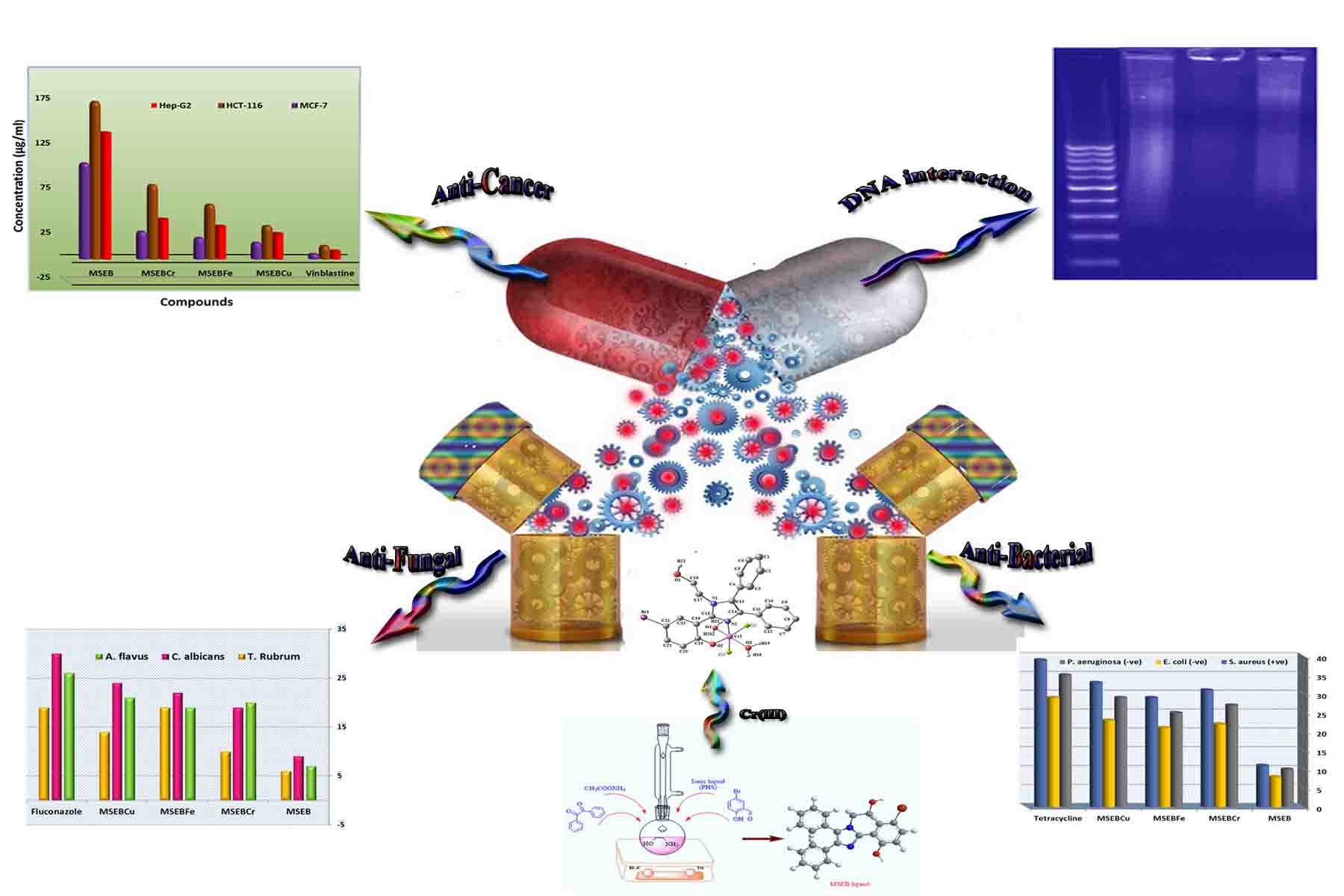Designing new metal-based molecular antibiotics is an efficient approach to overcome the growing threat of antimicrobial resistance. In this paper, novel Cr(III), Fe(III) and Cu(II) complexes comprising substituted aryl imidazole ligand (MSEB), namely (2-(1-(2-hydroxyethyl)-4,5-diphenyl-1H-imidazole-2-yl)(4-bromophenol)) have been synthesized and characterized using infra-red (IR), ultraviolet-visible (UV-Vis) and 1H, 13C NMR spectroscopic techniques, together with elemental (CHN) and thermogravimetric analyses, molar conductance, and magnetic susceptibility measurements.. The combined results along with the DFT calculations revealed a 1:1 (M: L) stoichiometric ratio and the complexes adopted distorted-octahedral geometries to afford [Cr(MSEB)Cl2(H2O)2], [Fe(MSEB)(NO3)2(H2O)2] and [Cu(MSEB)Cl(H2O)3] respectively. Biological studies showed that all complexes exhibited powerful antimicrobial activity against various strains of bacteria and fungi, S. aureus (+ve), E. coli (-ve) and P. aeruginosa (-ve) bacteria and T. Rubrum, C. albicans, and A. flavus fungi. Moreover, the three metal-complexes showed high in vitro cytotoxicity against Colon (HCT-116), Breast (MCF-7), and hepatic cellular (HepG-2) carcinoma cell lines, with MSEBCu complex being the most cytotoxic one. Finally the binding interactions of the complexes with CT-DNA were explored using UV-Vis spectroscopy, viscosity and gel electrophoreses measurements.


